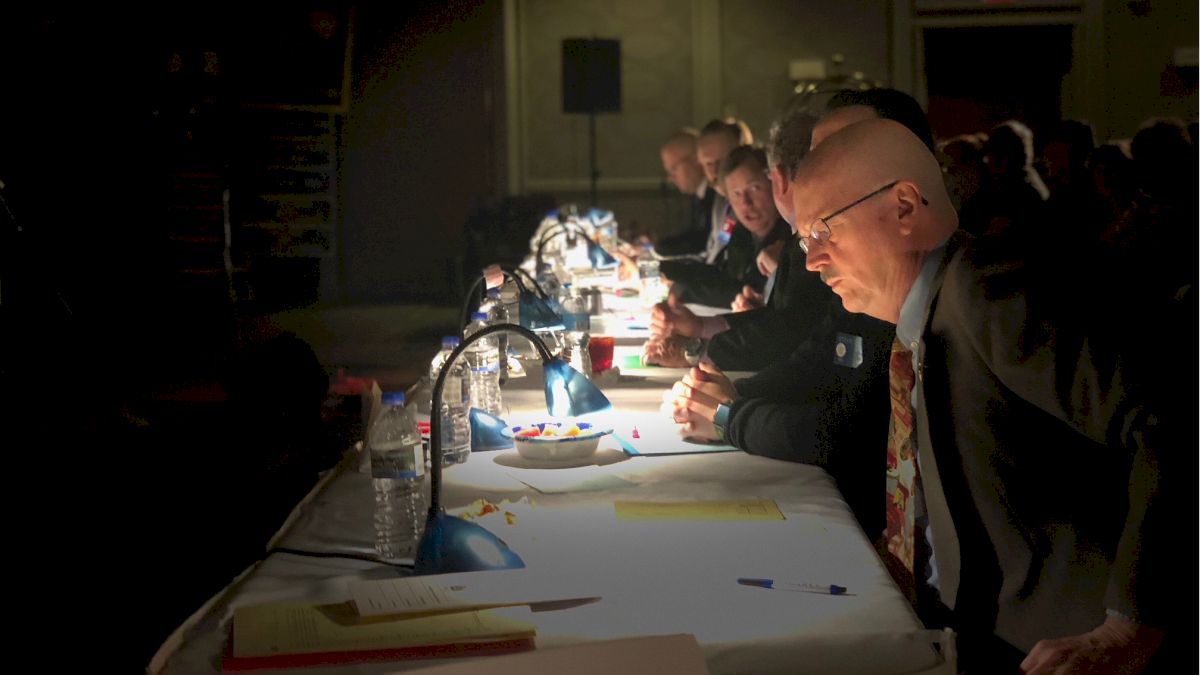Music, Performing, & Singing: The Art Of Barbershop Scoring
Music, Performing, & Singing: The Art Of Barbershop Scoring
Deciding who wins at can be a monumental task. Here's a breakdown on barbershop scoring and judging.

The 2018 International contest will kick off from Orlando with Quartet quarterfinals on July 3, and competitions will continue through July 7. You can catch all the action live on FloVoice! With the best of the best from around the world on the stage, deciding who wins can be a monumental task. However, the Barbershop Harmony Society provides detailed guidelines and highly qualified judges.
Here is what they’re looking for.
First and foremost, all songs are required to be sung in the barbershop style, which is “unaccompanied vocal music characterized by consonant four-part chords for every melody note in a predominantly homophonic texture.” By definition, that means it must include:
- A lead singing (mostly) melody, a tenor harmonizing above the melody, a bass singing the lowest notes, and a baritone completing the chord
- Clearly defined tonal center with major and minor chords and barbershop (dominant and secondary dominant) seventh chords that often revolve around the circle of fifths
- Perfectly tuned chords in just intonation
Each group is judged in three scoring categories: music, performance, and singing. Each of these categories has a separate group of certified judges, each of whom only score in one category.
Music
This category pertains to the song and the arrangement, as performed, with major element themes defined as consonance, theme, delivery and musicality, execution, and embellishment. The music judges are listening for how well the songs and arrangements represent the barbershop style, as well as the level at which the performance establishes and executes on a theme.
Within the music category, judges evaluate the finer points of execution on melody, harmony, lyric delivery, range, rhythm and meter, and form. Use and execution on elements like key changes, bell chords, echoes, and other embellishments are also noted here. While embellishments are encouraged, it is important to note that over-embellishment that detracts from the foundation of the song and barbershop harmony is discouraged and can lead to a lower score.
Performance
Based on both the music and visual presentation, the performance judges are tasked with evaluating how well a performer brings the song to life and how well both elements work together. While both aspects are important, judges are looking for the appropriateness of delivery and the emotional impact on the audience. It’s here where creativity, audience rapport, artistic expression, and believability count.
Singing
Top scores in this category are awarded for precise intonation, a high degree of vocal skill and appropriate vocal expression, and a high level of unity and consistency within the ensemble. A mastery of these skills creates the quintessential fullness of the barbershop sound and lends emotion that supports the message of the song. Judges are listening for intonation, blend and volume relationship, tone, and inflection.
Each category is rated on a scale of 1 to 100:
- Excellent (A-level, from 81-100)
- Good (B-level, from 61- 80)
- Fair (C-level, from 41-60)
- Poor (D-level, from 1-40)
Each judge submits a score and all scores are both totaled and averaged to calculate the final rankings.
All competitors at International have previously scored excellent or good in district competition to qualify. Both quartets and choruses are evaluated using the same criteria. As we lead up to International, we'll deep dive into each of these categories to get your ready to armchair judge from home.
Want to know more? Check out the Contest and Judging Handbook available at barbershop.org.